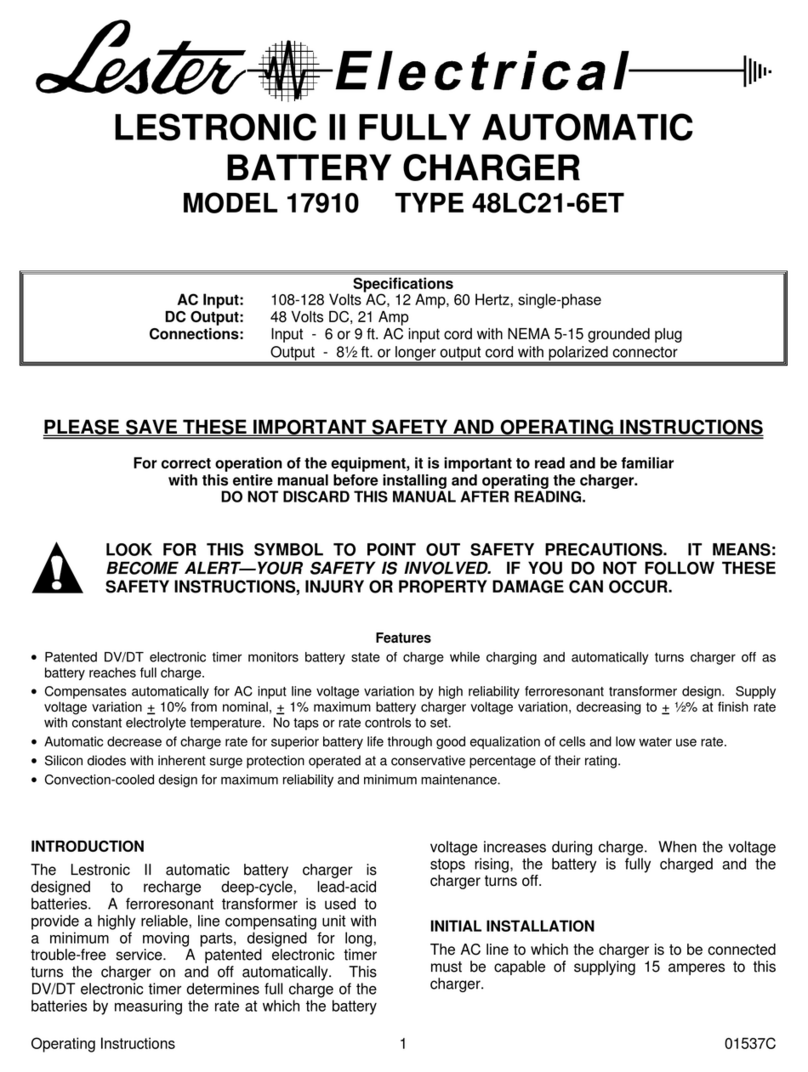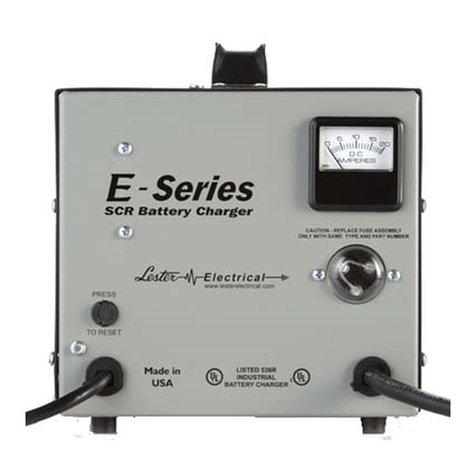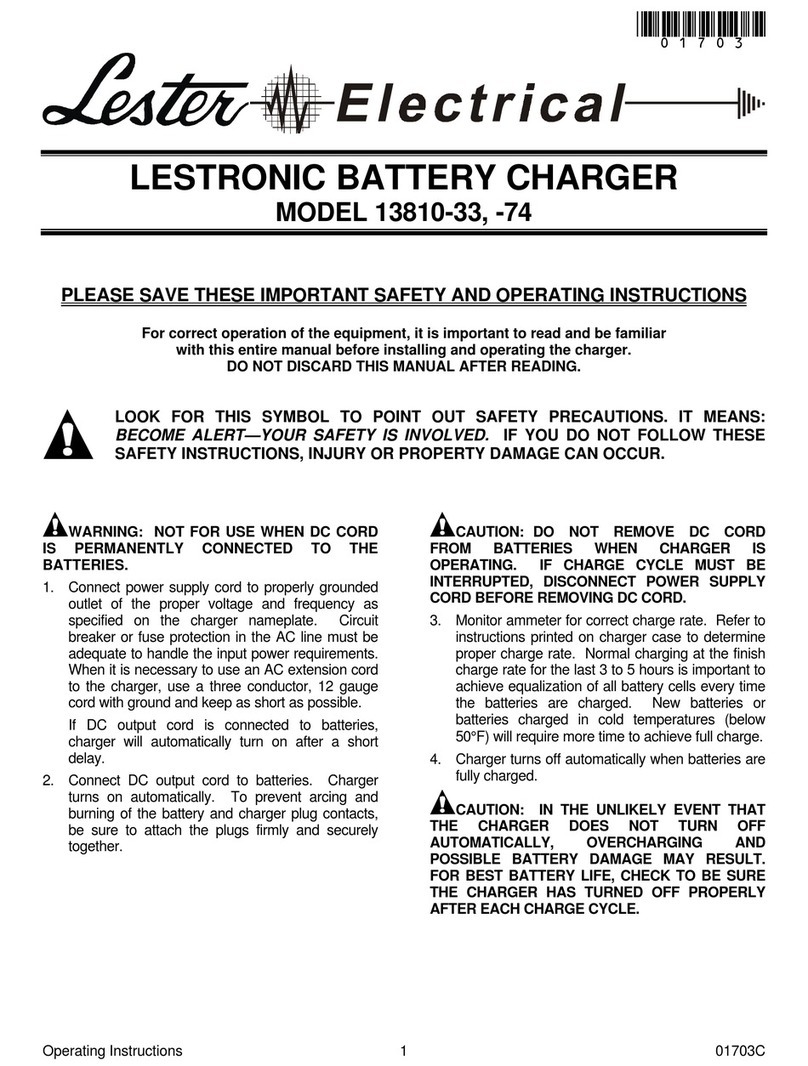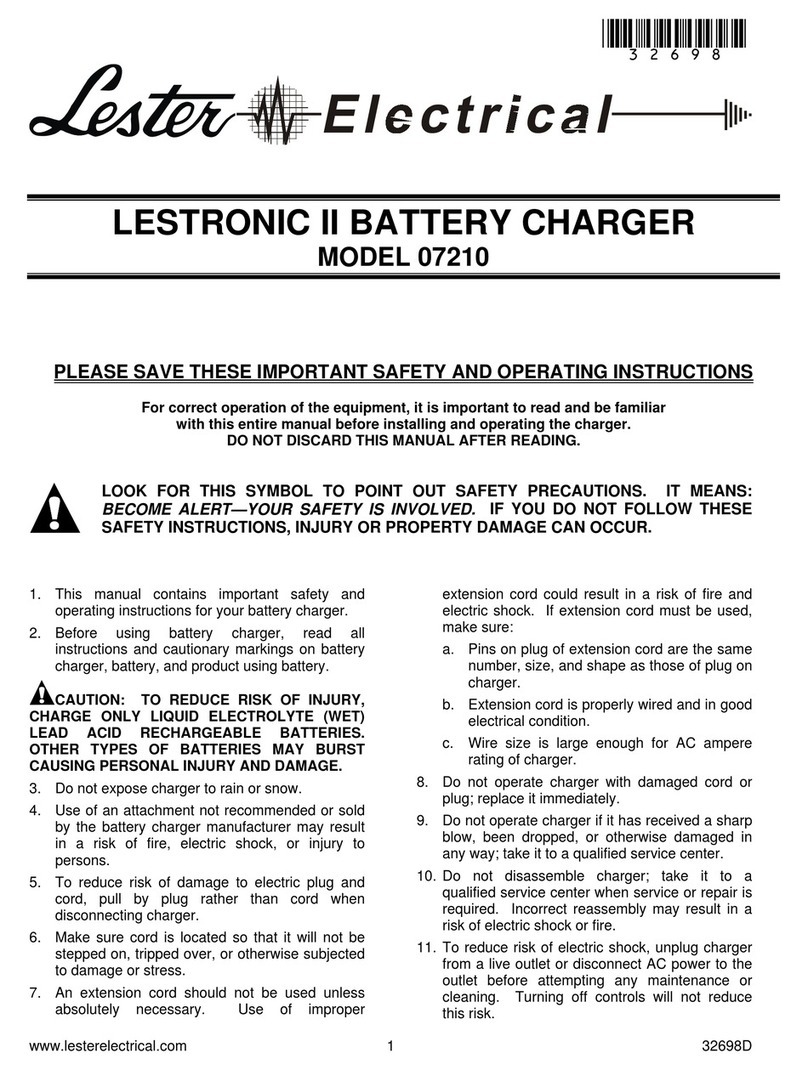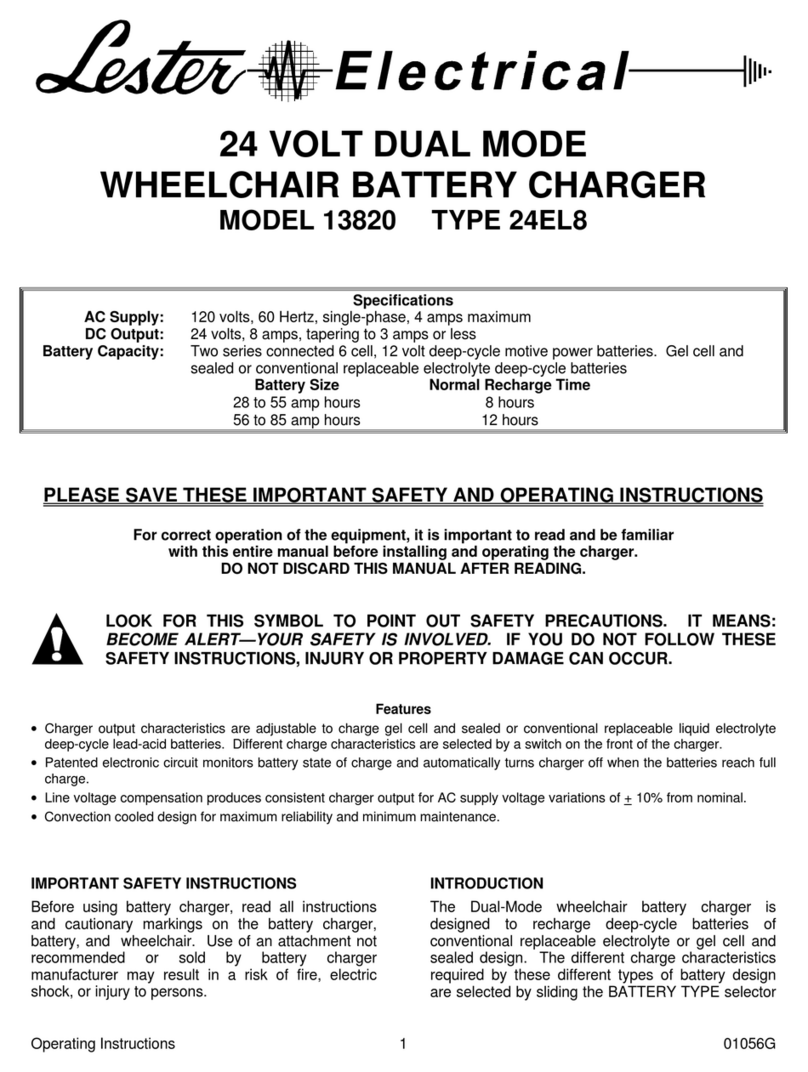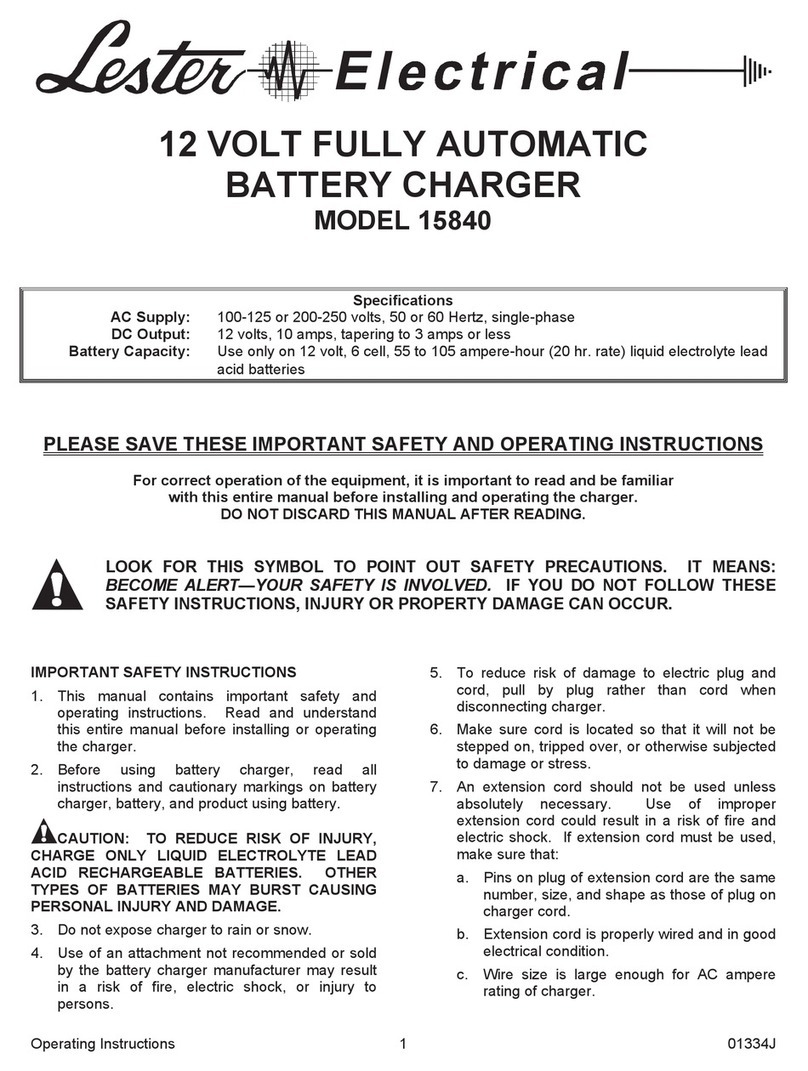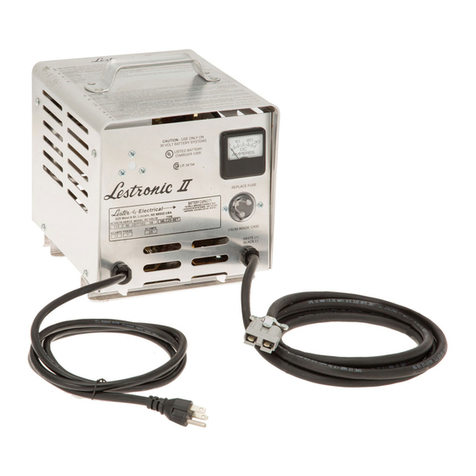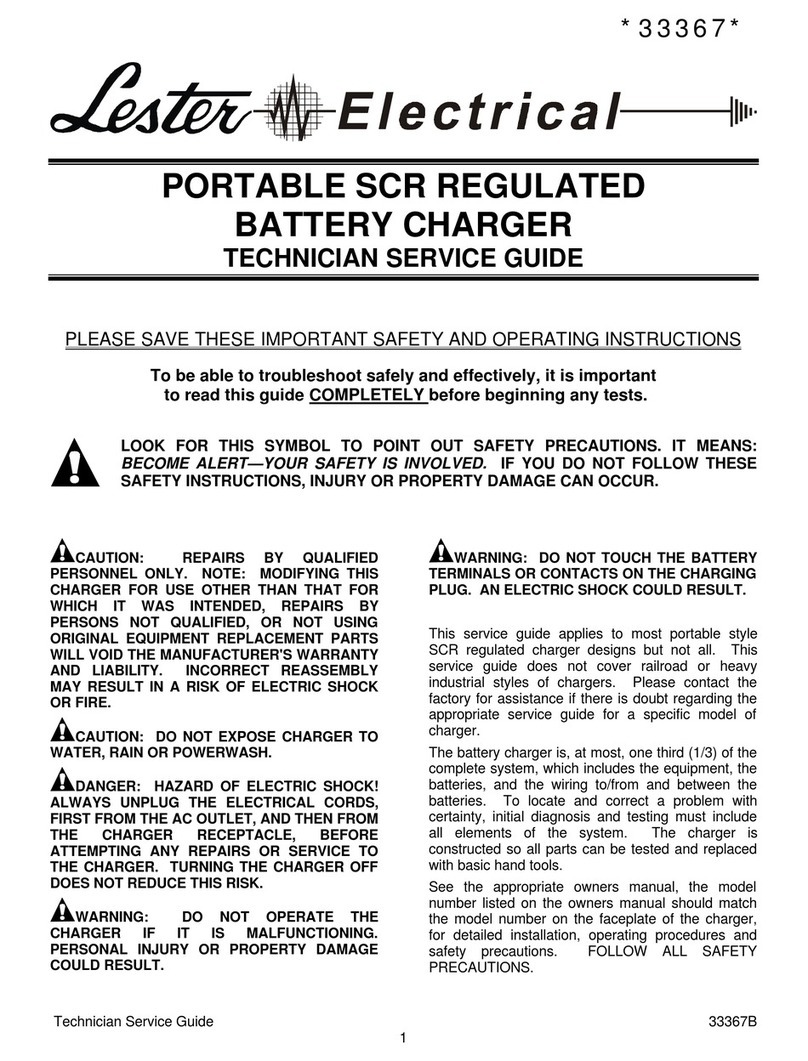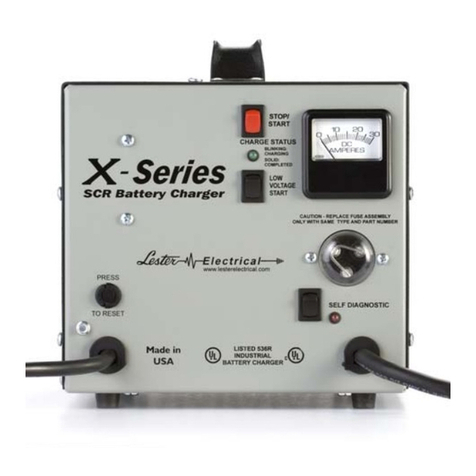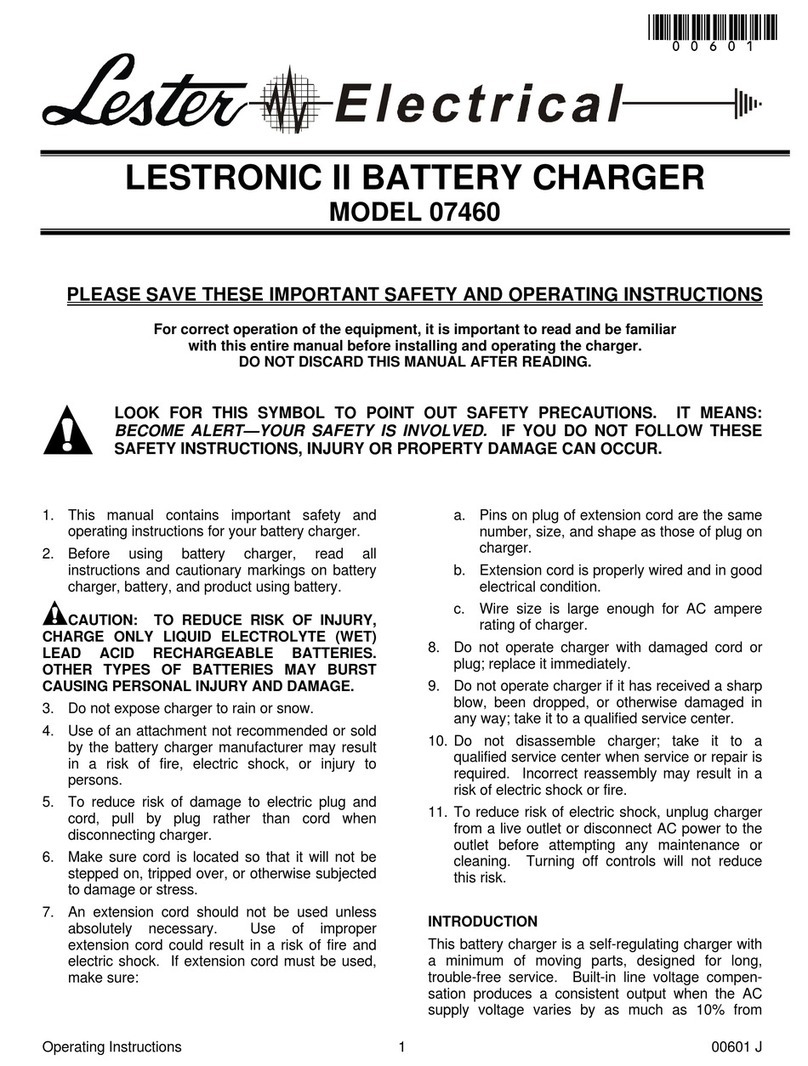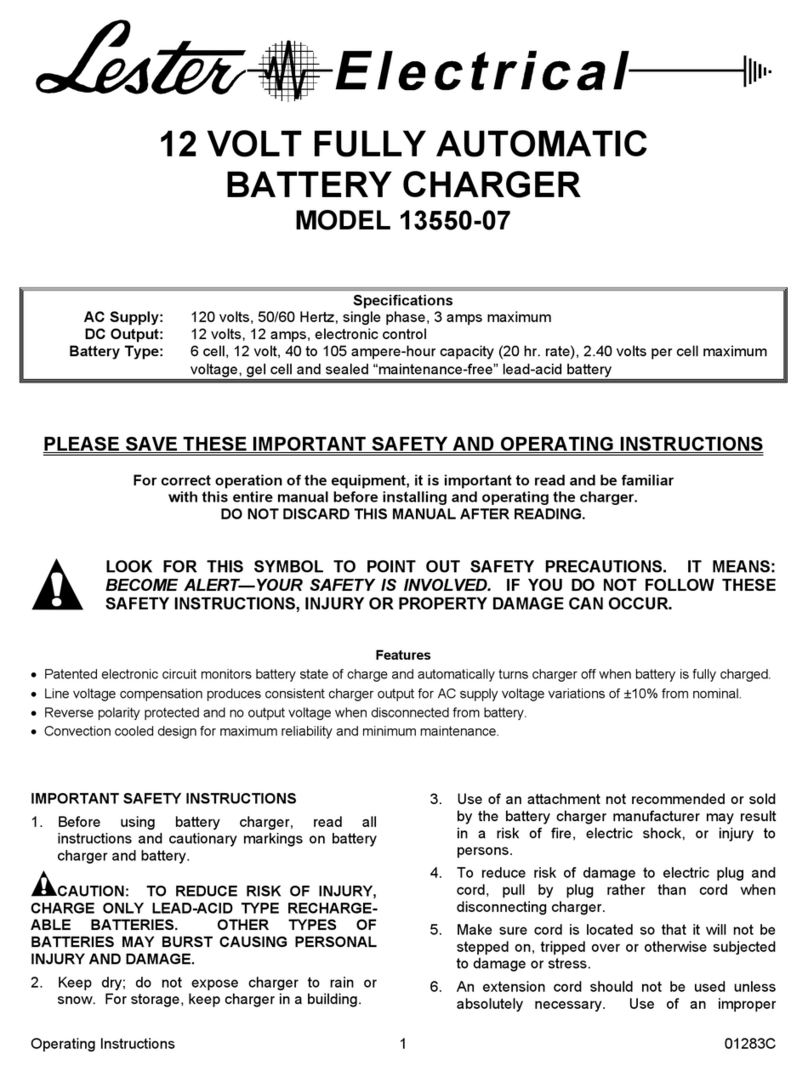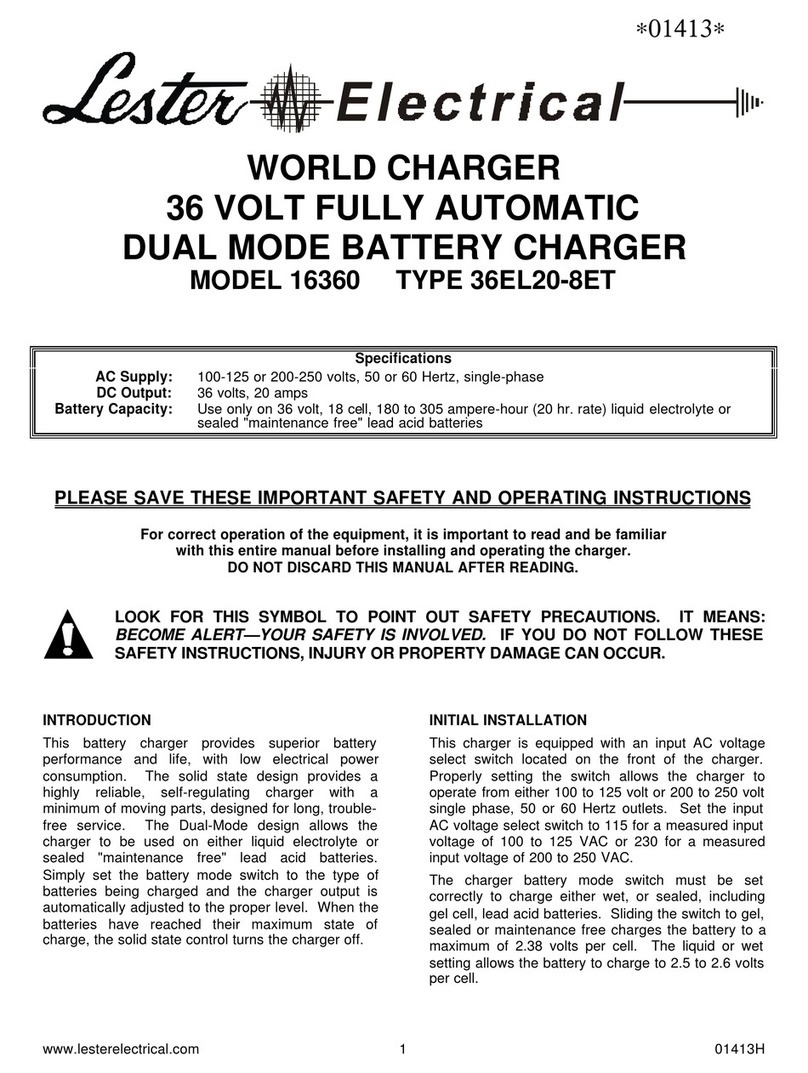
www.lesterelectrical.com 3 34943F
•The DC charging receptacle does not grip the
DC output plug tightly, is loose or does not make
a good electrical connection.
•The DC output plug and/or charging receptacle
feel hotter than normal.
•The DC output plug pins or receptacle contacts
are bent, corroded or are dark or bluish in
appearance.
•The DC output plug, cords, receptacle or vehicle
charging wiring are cut, worn, broken, or have
any exposed conductors.
•The DC output plug, cords, charger or
receptacles are damaged or distressed in any
way.
Using the charger with any of the above symptoms
could result in a fire, property damage, or personal
injury.
Have your distributor, dealer or other qualified
service agent repair or replace worn or damaged
parts immediately. Repairs should not be attempted
by people who are not qualified.
1. Insert the DC output plug completely into the
matching vehicle receptacle by grasping the
plug handle and pushing the plug straight into
the receptacle.
2. Charger will start automatically three to five (3-5)
seconds after plug insertion.
DANGER: USE IN WELL VENTILATED
AREA. ELECTRICAL ARCING COULD IGNITE
HYDROGEN GAS PRODUCED BY THE BATTERY
WHILE CHARGING. KEEP SPARKS, OPEN
FLAME AND SMOKING MATERIALS AWAY
FROM BATTERIES. NEVER DISCONNECT OR
CONNECT DC PLUG FROM VEHICLE UNLESS
CERTAIN THAT THE CHARGER IS OFF. TO
INTERRUPT CHARGE CYCLE, DISCONNECT AC
PLUG FROM OUTLET BEFORE REMOVING DC
PLUG FROM VEHICLE RECEPTACLE.
Monitor the ammeter for the correct charge rate.
The initial charge rate will vary from 16 to 25
amperes, depending upon the condition of the
batteries and how much the batteries have been
discharged.
Slight variations in the initial charge rate may
also result from AC input line voltages which are
higher or lower than nominal. Higher line
voltages increase the initial charge rate while
lower line voltages reduce the charge rate.
If the batteries are heavily discharged and the
AC input line voltage is higher than nominal, the
initial charge rate may exceed 25 amperes.
Under normal conditions the charge rate will
taper to less than 25 amperes within 30 minutes.
If the ammeter still reads 25 amperes or more
after 30 minutes, turn the charger off by
disconnecting the AC plug from its outlet.
CAUTION: TO PREVENT BATTERY
DAMAGE, CHARGER OVERHEATING, AND
TRANSFORMER BURNOUT, DO NOT ALLOW
THE CHARGER TO OPERATE FOR MORE THAN
30 MINUTES WITH THE AMMETER READING IN
EXCESS OF 25 AMPS. THIS IS MISUSE AND
WILL CAUSE OVERHEATING AND TRANS-
FORMER BURNOUT.
During charge, the battery voltage increases
gradually which causes the charge rate to
decrease. Good battery cells should each rise
to approximately 2.5 volts DC which will allow
the charge rate to taper to less than 6 amps.
Since each cell accepts charge at a slightly
different rate, normal charging with the ammeter
reading in the 4 to 8 amps area for the last few
hours of charge is important to achieve
equalization of all battery cells every time the
batteries are charged.
As batteries age, individual cells weaken
resulting in lower than normal finish charge
voltage. As the finish charge voltage decreases,
the charge rate will no longer decrease and
taper into the 4 to 8 amps range on the
ammeter. The electronic charge controller will,
however, still determine when the batteries have
reached full charge and turn the charger off.
Even though they are properly charged, older
batteries will gradually lose capacity, and should
be replaced when they will no longer perform as
required.
3. Charger will automatically stop when batteries
are fully charged. Charge time will vary with
battery capacity, depth of discharge,
temperature and age. Allow 10 to 12 hours for
normal charging. Batteries that are heavily
discharged, new batteries, or batteries charged
in cool temperatures require more time. The
electronic charge controller will turn charger off
after 16 hours regardless of battery state of
charge.
4. To stop charger during the charge cycle,
disconnect AC plug from outlet before
disconnecting DC plug from vehicle receptacle.
After charger is off, remove DC plug by grasping
plug handle and pulling plug directly out of
receptacle.
WARNING: TO AVOID DAMAGE TO THE
CHARGER CORD, PLUG, AND BATTERY
RECEPTACLE, DO NOT PULL ON THE
CHARGER CORD. DO NOT TWIST, ROCK, OR
PULL THE PLUG SIDEWAYS.
